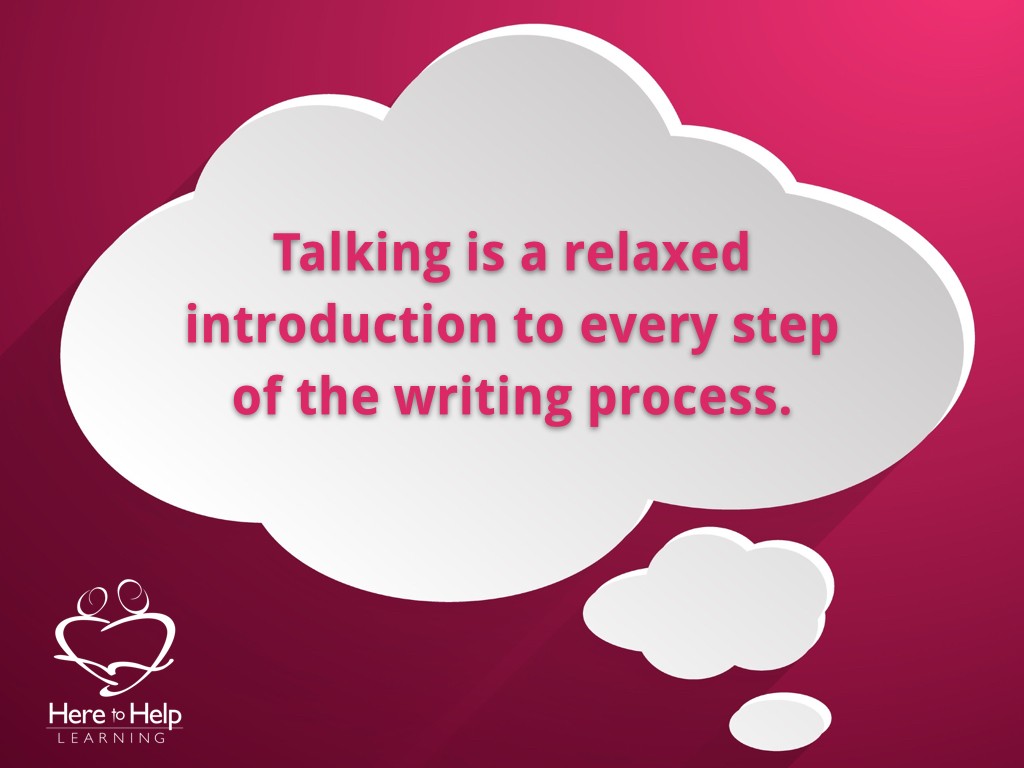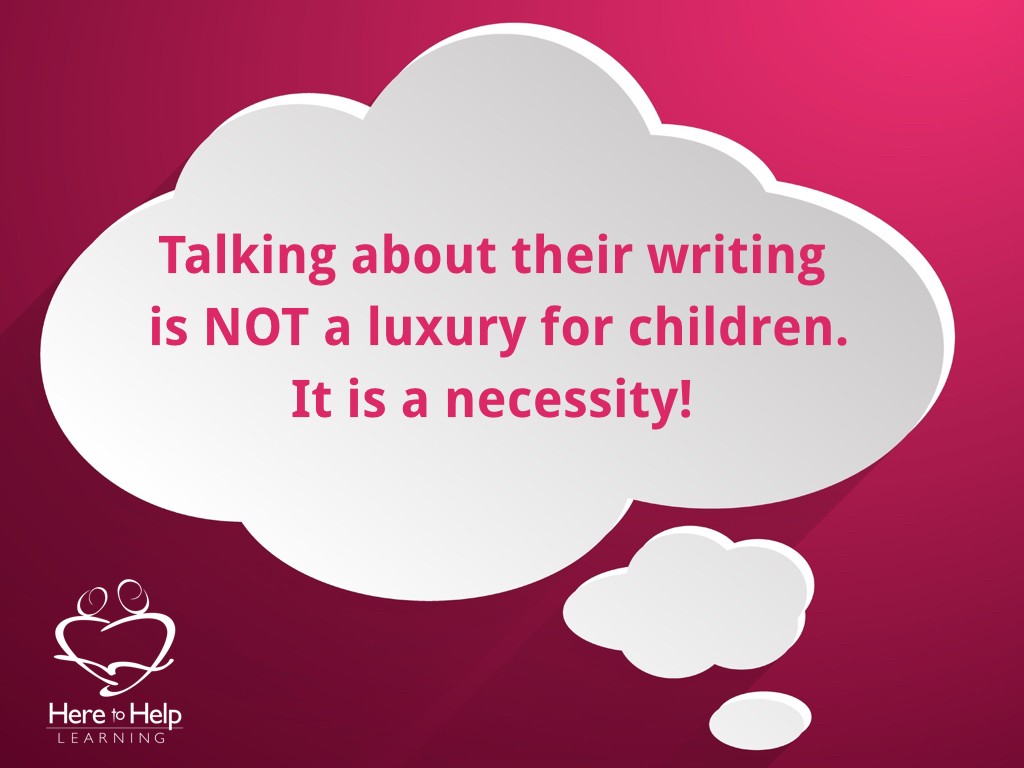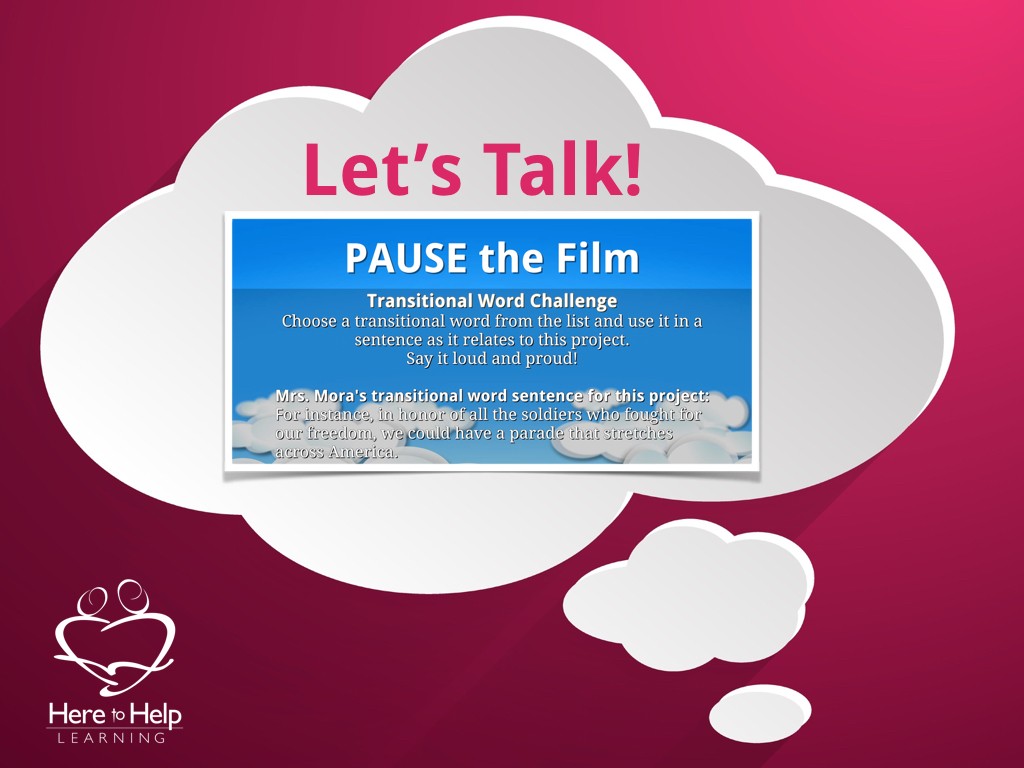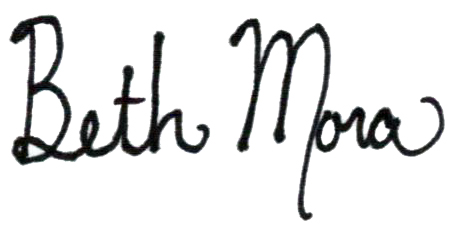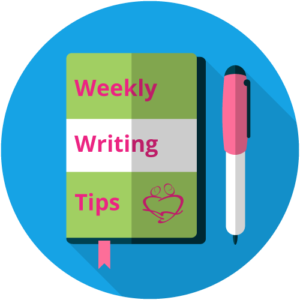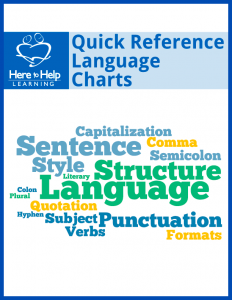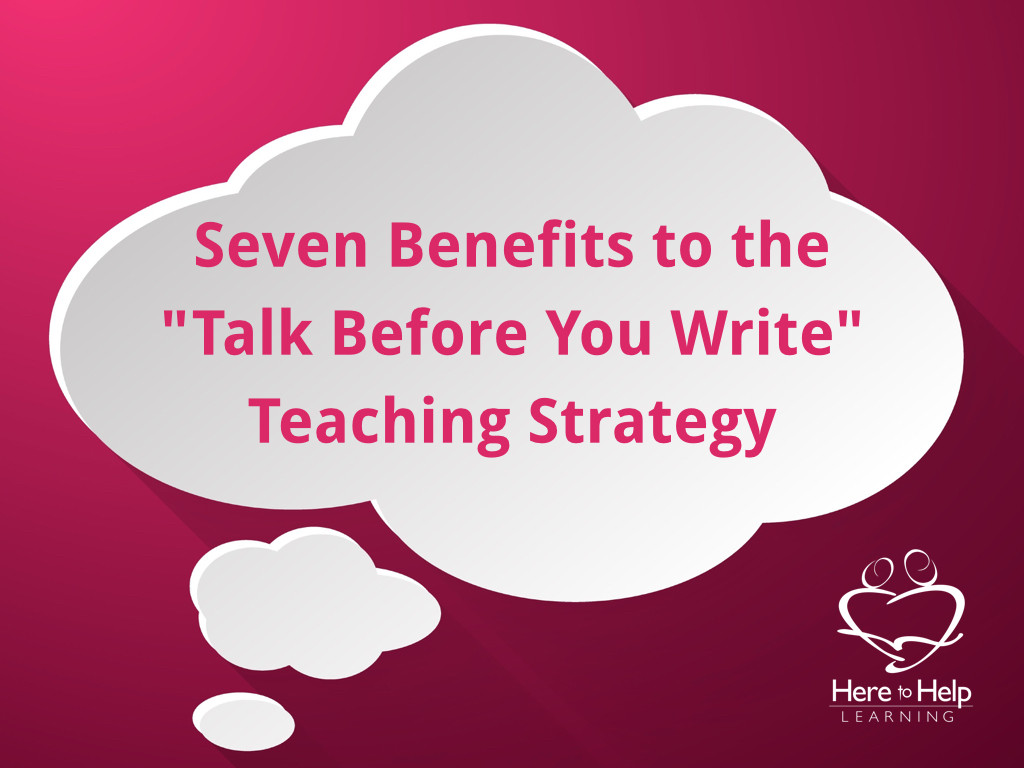
Moans, groans, and nasty tones, no it’s not Halloween. You just announced to your kids, “It’s time for writing.” You may have all the steps of the writing process neatly organized, but often home educators skip or skim through an important teaching strategy when teaching writing. They avoid the talk. No, not “the talk.” I mean allowing your child to talk about what they are going to write. Young writers must rehearse what they are going to say through writing before they grasp a pencil.
Think about your child’s natural communication development.
- Sounds lead to words
- Words lead to sentences and speech
- Talking precedes reading and writing
In reading, powerful learning connections happen when a child narrates or retells a story. In writing, it’s the same. Powerful learning connections happen when a child talks about what they are going to write before they write. Talking is a relaxed introduction to every step of the writing process, and children need multiple opportunities to discuss before they write.
It’s not just children, most writers at some point in the writing process must talk about their writing if they want to succeed as a writer. Talking and writing go hand in hand. In the words of Forrest Gump, “They go together like peas and carrots!”
Look at this excerpt from a college website about writing:
“ After you have done some thinking, it’s useful to talk about your topic with another student, or you might try to explain it to a Learning Center tutor or someone at home. Talking about your topic and expressing your ideas can help you develop your ideas even if your listener doesn’t know anything about the subject. Getting your listener to ask you questions is especially helpful.”
If college kids benefit from the “talk before you write” writing strategy,
so will your young writer!
Seven Benefits to “Talk Before You Write” Teaching Strategy
- Shapes Ideas
- Orders Ideas
- Clarifies Purpose
- Improves Drafts and Revisions
- Reorients Direction of Writing
- Helps the Writer Discover Different Points of View
- Children LOVE It!-Positive feelings energize the writing assignment!
The Homeschool Advantage- Mentorship
Homeschool students have an advantage when learning how to write. Sadly, the average public school student spends less than 5% of classroom time discussing what they are learning. The time to talk about their writing just isn’t there. As a home educator, you have the opportunity to engage your student in open-ended questions about every step of the writing process that translates into your child becoming an effective writer and communicator!
Be wary of independent computer writing programs or step-by-step workbooks that omit this vital component of learning how to write. I’m all for independent learning, but your child needs a human being. Talking about their writing is NOT a luxury for children; it is a necessity!
Did you know?
Here to Help Learning’s Writing Program includes “Pause the Film” screens to facilitate discussion between teacher and student. We provide teachers with lead questions and discussion topics in every step of the writing process for every writing project!
Make ample time to include this powerful teaching strategy in your writing program!
Please don’t avoid, the talk.
From Our Home to Yours,
First published: Oct 21, 2015

